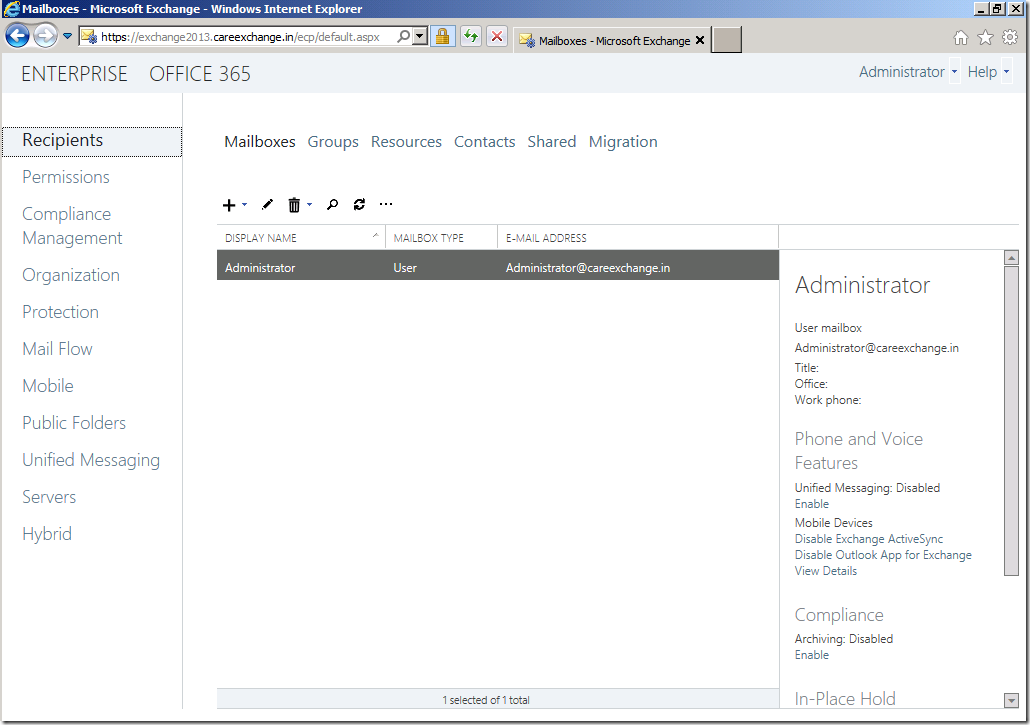Atlast !! Microsoft Releases its Next version Exchange 2013 !!
A Vast difference in Architecture
Microsoft Exchange Server 2013 has only Two Roles :
- Client Access server role – All Client Requests hit only the Client Access Server Role as there is Hub Transport role anymore !!
Client Requests such as Microsoft Office Outlook, Outlook Web App, mobile devices, POP, and SMTP and also accepts mail from and delivers mail to other mail hosts on the Internet.
High Availability – CAS array
- Mailbox server role – It stores all the mailbox data, All requests from Client access Server for client connections proxied by the Client Access server,
It also handles Unified Messaging requests.
High Availability – database availability groups (DAGs).
The Exchange Administration Center (EAC) is the web-based management console in Microsoft Exchange Server 2013 Preview that allows for ease of use and is optimized for on-premises, online, or hybrid Exchange deployments.
The EAC replaces the Exchange Management Console (EMC) and the Exchange Control Panel (ECP)
Great right !! Hassle free Without any console issues and Less server requirement !!
You can Download the Help Link for Exchange 2013 to read it offline.
For On premises – Download
Microsoft Exchange Server 2013
Before Downloading – Please Read the Important Guidelines from the Help Document
– The Edge Transport server role isn’t included with Exchange 2013 Preview
– Coexistence with Exchange 2007 or Exchange 2010 is Not supported with Exchange 2013 Preview.
Coexistence with Exchange 2007 and Exchange 2010 will be supported with Exchange 2013 RTM.
– So Exchange 2013 Preview can’t be installed in the same Active Directory forest as Exchange 2007 or Exchange 2010.
Use an Active Directory forest with no prior installations of Exchange 2007 or Exchange 2010.
– Although you can create and manage public folder mailboxes from the Exchange Administration Center (EAC),
you can’t do some tasks yet like creating, retrieving, updating, and deleting public folders, and modifying permissions on public folders.
To work around this issue, use the Microsoft Office Outlook client to manage public folders.
– Address book Policies is not fully functional yet
I just had only the important lines above . Please read the help file for brief description
More to Come !!
See also –
Installing Exchange 2013 Preview on Windows Server 2008 R2 Sp1
How to Login to Exchange Administration Center (EAC) in Exchange 2013 Preview



I conceive you have noted some very interesting details , regards for the post.